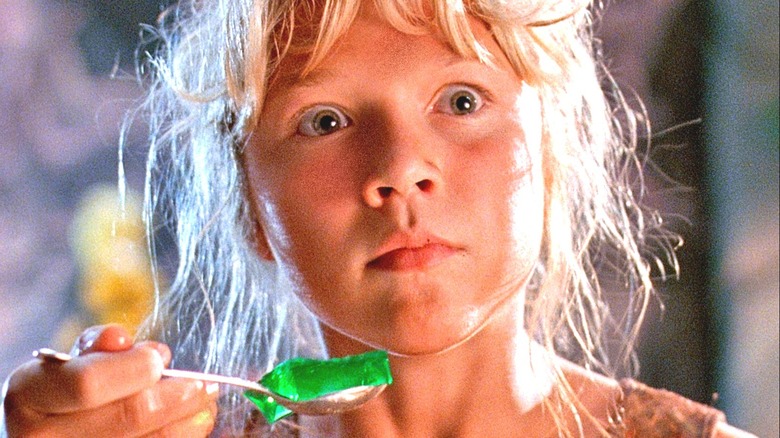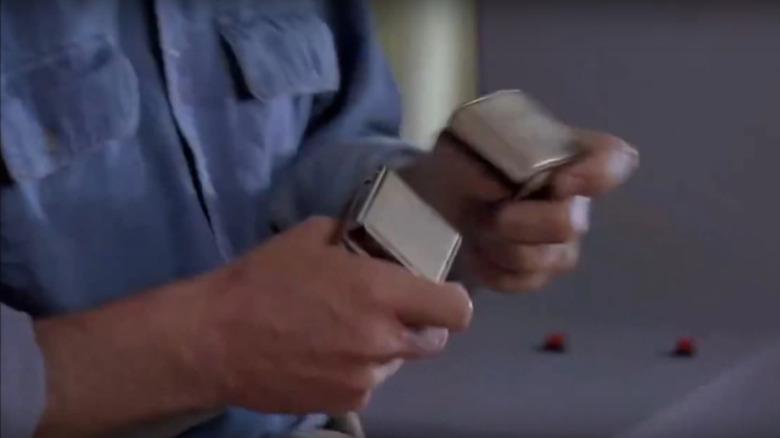The Big Clue Everyone Missed Early In Jurassic Park
The original "Jurassic Park" remains the pinnacle of blockbuster filmmaking. It's the rare science-fiction film from the 1990s where the visual effects still hold up. The movie manages to deliver a pertinent message about the dangers of overzealous science while still including a scene where a T-Rex eats a lawyer. The sequels may have had diminishing returns in terms of quality, but at least the world will always have the glorious original that shows director Steven Spielberg at the top of his game.
"Jurassic Park" is a film that demands rewatches. Each time you go through it again, new details help tell a richer story, from Easter eggs to clever foreshadowing. For example, Dennis Nedry (Wayne Knight) keeps a photo of J. Robert Oppenheimer on his computer screen (via Reddit). Many consider the scientist the father of the atomic bomb, and just like Oppenheimer, the scientists behind "Jurassic Park" are ultimately behind untold death and destruction.
That's not the only hidden detail that hints at greater machinations at play within "Jurassic Park." If you pay close enough attention, then you should find a clever story beat that foreshadows the big twist revealed later in the film.
Dr. Grant's seatbelt moment shows how life finds a way
A common refrain heard throughout "Jurassic Park" is about how life always finds a way. As a chaos theorist, Dr. Ian Malcolm (Jeff Goldblum) believes there's no way scientists can control these animals long before the rampages start. Everyone in the park blows him off initially, assuming they've found a way to contain the dinosaurs by making them all female, meaning they can't reproduce. However, the team later finds eggs on the island, proving males among the dinosaurs. In essence, life found a way.
The in-universe explanation is that the scientists used West African frog DNA to replicate the animals fully, and some frogs can change sex, meaning the dinosaurs can do it, too. It's a neat detail that makes perfect sense within the movie's logic, but if you paid attention earlier in the film, you should've seen it coming.
It's a bumpy descent into the park, so everyone fastens their seatbelts ... except for Dr. Alan Grant (Sam Neill) because he has two buckles instead of a buckle and a latch plate. To save himself some trouble, Alan ties the two straps together and calls it a day. It's a humorous moment, but it also shows how life finds a way. After all, there's a reason people also refer to the buckle as the "female part" of the seatbelt.
Alan only had "female" parts, but he made it work. Similarly, the dinosaurs, who were all cloned to be female, found a way to accomplish reproduction. The scene also foreshadows John Hammond's (Richard Attenborough) lies. He frequently mentions how they spared no expense to keep the park safe, but the helicopter doesn't even come with the right gear. It turns out to be the least of their problems as the adventure begins.

